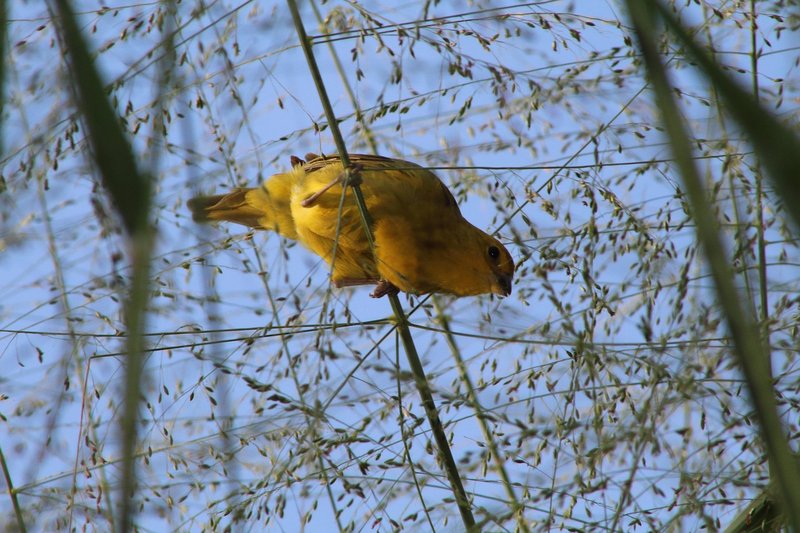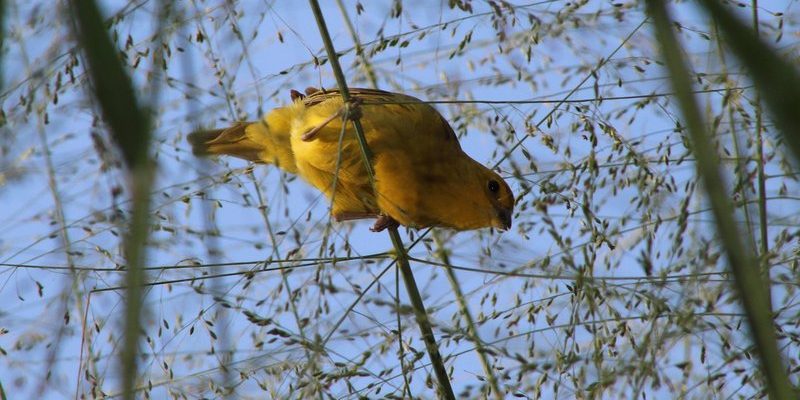
So, what exactly sets canaries apart from their look-alikes and nearby cousins? Let’s dive in together to explore the unique traits of canaries and how they differ from similar bird species. This journey will help you understand these delightful creatures a bit better, whether you’re thinking of getting one or just curious about our feathered friends.
Canary Basics: What Makes Them Special?
Canaries belong to the finch family and are originally from the Canary Islands, hence their name. They’re known for their vibrant colors, with shades ranging from bright yellow to deep orange and even white. But there’s more to these birds than just their looks.
One of the most fascinating things about canaries is their singing ability. They’re often kept as pets not just for their beauty but for their melodious songs, which can vary significantly based on the specific breed. Canaries have a strong instinct to sing, especially the males, and they can serenade you for hours with their cheerful tunes.
Canaries are also relatively easy to care for, making them a perfect choice for beginner bird owners. They thrive in a spacious cage with plenty of toys for stimulation and need a balanced diet that includes seeds, fruits, and vegetables. Here’s a little tip: providing a varied diet helps them maintain their vibrant colors and singing abilities!
Yellow Finches: The Lookalike Cousins
When talking about canaries, you’ll often come across yellow finches, particularly the American Goldfinch. At first glance, these birds may seem almost indistinguishable from canaries, especially when they’re flaunting their bright yellow feathers. However, there are key differences that set them apart.
American Goldfinches are typically smaller and have a more elongated shape compared to canaries. Their songs, while tuneful, lack the same melodious complexity found in a canary’s repertoire. Plus, goldfinches feed primarily on small seeds, and you’ll find them flitting around trees or shrubs as they forage for food, unlike canaries which prefer to stay perched in their cages.
Another interesting point is that American Goldfinches have seasonal plumage changes. In summer, males sport bright yellow feathers, but come winter, they become more muted in color. Canaries, on the other hand, maintain their vibrant hues year-round, adding a splash of color to any environment.
Finches vs. Canaries: More Than Just Looks
While canaries and finches may share some similarities, they belong to different families and have distinct characteristics. Finches include a variety of species, each with their own unique traits. For example, house finches are often seen at feeders, showcasing their brown and streaky plumage, which is quite different from a canary’s bright colors.
One major difference lies in their vocalization. Many finches have cheerful chirps, but they generally do not sing with the same intricacy as canaries. Canaries are bred specifically for their singing ability over generations, which explains their diverse range of songs—from sweet trills to complex melodies.
Moreover, the behavior of these birds varies. Finches are often more social, found in flocks, and they adapt well to a variety of habitats. Canaries, while they can be social, are sometimes more solitary, especially when they feel threatened. This can affect how you keep them in a cage environment when compared to finches.
Canaries vs. Budgerigars: Color and Personality
You might also be curious about the differences between canaries and budgerigars, commonly known as budgies. Both birds are popular in the pet trade, but they have distinctive characteristics. Budgies come in various colors, including green, blue, and yellow, but they generally sport a more colorful plumage than the typical canary.
Budgerigars are larger than canaries, often reaching about 7 inches in length compared to canaries, which average around 5 inches. Budgies are known for their playful and interactive personalities. They often enjoy training and can mimic human speech, making them a popular choice for owners who want a more engaging pet.
In contrast, canaries are less interactive. While they may appreciate some company, they don’t typically bond with humans in the same way budgies do. If you’re looking for a bird that sings beautifully but isn’t looking for constant interaction, a canary might be your best bet.
How to Choose the Right Bird for You
Thinking about adding a feathered friend to your home? Choosing the right bird is important, and understanding the differences between canaries and similar species can help you make that decision. Here are a few things to consider:
– Space: Canaries do well in spacious cages but don’t need as much room to fly as budgies or finches. If you have limited space, a canary could be a good fit.
– Noise Level: If you enjoy the idea of a singing bird, a canary might delight you for hours with its melodies. Budgies and finches can be noisier, especially in groups.
– Social Interaction: If you want a bird that interacts more, a budgerigar may be the right choice. Canaries are lovely to watch and listen to but are generally less interactive.
By thinking through your lifestyle and environment, you can find a bird that not only sings sweetly but also fits perfectly into your home.
Why Understanding Bird Differences Matters
It’s not just about picking a bird you like; knowing the differences between canaries and similar species can lead to better care and a happier pet. Each bird has its individual needs regarding diet, space, and social interaction.
For instance, while a canary’s diet consists of seeds and fruits, finches may thrive on a diet rich in specific seeds. Understanding these nuances can help prevent health issues down the line and ensure your feathered friend has a long, happy life.
Moreover, recognizing their songs and behaviors can deepen your relationship with your pet. You’ll learn to recognize when they’re happy or when something is off. It’s like getting to know a friend—you start to notice the little things that make them unique!
Final Thoughts: Embrace the Diversity of Birds
Taking the time to learn about the differences between canaries and their similar bird species can enrich your experience as a bird owner or enthusiast. Each bird, whether it’s a canary, a finch, or a budgerigar, has its own charm and character.
Ultimately, the right choice depends on your preferences and lifestyle. So, whether you’re dazzled by the canary’s song, the budgie’s playful antics, or the finch’s lively spirit, there’s a world of avian joy waiting for you. Remember, every bird has its own story and quirks—get to know them, and you might just find a delightful new friend!

